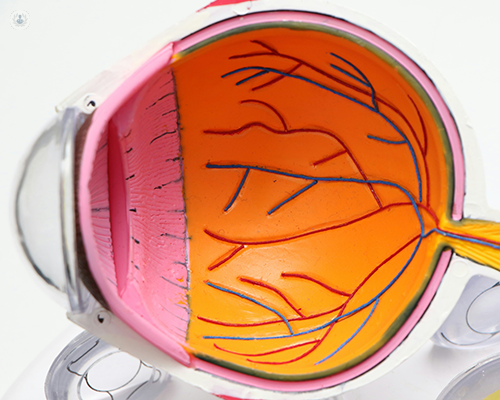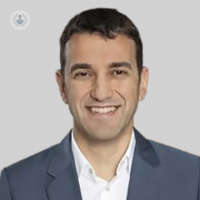Complex cataract surgery: Specialised techniques and advanced treatment
Autore:Cataracts are a common eye condition that occurs when the natural lens of the eye becomes cloudy, leading to blurred vision, glare, and difficulty seeing in low light. However, not all cataracts are alike and for some people, cataracts will present with additional challenges.
Mr Antonis Kaintatzis, distinguished consultant ophthalmic surgeon, explains the key aspects about complex cataracts, including what they are, how they are treated, and what you can expect during recovery.

What are complex cataracts?
Complex cataracts are cataracts that present additional challenges that complicate their diagnosis, treatment, or management. For example, complex cataracts may result from underlying conditions such as glaucoma, diabetic retinopathy, or uveitis. They can also develop due to trauma or previous eye surgeries like LASIK or glaucoma procedures.
Unlike typical cataracts, which are often easily treated with standard cataract surgery, complex cataracts require a tailored approach to address the underlying conditions or structural abnormalities that coexist with the cataract, such as a damaged capsule or an altered eye anatomy.
How is surgery for complex cataracts performed?
Surgery for complex cataracts is a highly specialised procedure that demands a high level of expertise, as well as advanced techniques and equipment to stabilise the eye.
Your ophthalmic surgeon will begin with a preoperative assessment, including advanced imaging techniques like optical coherence tomography (OCT) and biometry, to understand the eye’s unique characteristics and help make precise decisions.
The procedure itself will involve breaking up and removing the clouded lens using ultrasound (phacoemulsification) and then replacing it with an artificial intraocular lens (IOL). For complex cases, specialised techniques will be employed, such as:
- Capsular tension rings: If the natural lens capsule is weak or damaged, these devices will help stabilise it.
- Sutured or scleral-fixated IOLs: If the eye’s natural support structures are insufficient, these lenses will be attached to the eye using advanced fixation techniques to secure the artificial lens in place.
- Laser-assisted surgery: Depending on the case, laser will be used for precise incisions and laser fragmentation.
In some cases, cataract surgery will be performed alongside other procedures, such as vitrectomy or glaucoma surgery to manage intraocular pressure.
What types of intraocular lenses are suitable for complex cataracts?
IOLs are essential components of cataract surgery, as they will replace the natural lens removed during the procedure. For complex cataracts, the choice of IOL is particularly important and depends on the specific challenges posed by each patient’s condition.
There are various options available:
- Monofocal lenses: Monofocal lenses are provide clear vision at a single focal point, usually for distance. These lenses are safe and reliable, and are also ideal for people with other eye conditions.
- Toric lenses: Toric lenses will be recommended for people with astigmatism (an irregular curvature of the cornea) to correct it.
- Multifocal or extended-depth-of-focus (EDOF) lenses: Multifocal or EDOF lenses will be recommended for people seeking to reduce their dependence on glasses.
In cases where the capsular bag is damaged, customised or specialised lenses such as scleral-fixated or anterior chamber lenses will be used to provide stability and clarity to the eyes, ensuring optimal fit and function.
What is the expected recovery time after complex cataract surgery?
Recovery from complex cataract surgery is often longer than for routine procedures, primarily because of the additional challenges involved. Most people will experience noticeable improvements in their vision within a few days, but full healing will take several weeks to months, depending on the complexity of the case.
To ensure the best possible outcomes, it’s essential to follow your surgeon’s post-operative instructions carefully. This includes using prescribed eye drops to reduce inflammation and prevent infection, avoiding strenuous activities, and protecting the eye from injury or contaminants.
Managing any underlying chronic conditions, such as diabetes or hypertension, can also help to support your recovery. If you notice any unusual symptoms, including pain, redness, or sudden vision loss, it’s imperative to contact your surgeon immediately.
How often will I need follow-ups after surgery for complex cataracts?
You will typically have your first follow-up appointment within 24 to 48 hours after surgery to check for any immediate complications. Subsequent visits will then be scheduled at 1 week, 1 month, and periodically based on your progress.
For people with coexisting conditions like glaucoma or uveitis, more frequent monitoring will be required. Regular follow-ups will allow your surgeon to ensure the eye is healing properly.
If you would like to book an appointment with Mr Antonis Kaintatzis, head on over to his Top Doctors profile today.


